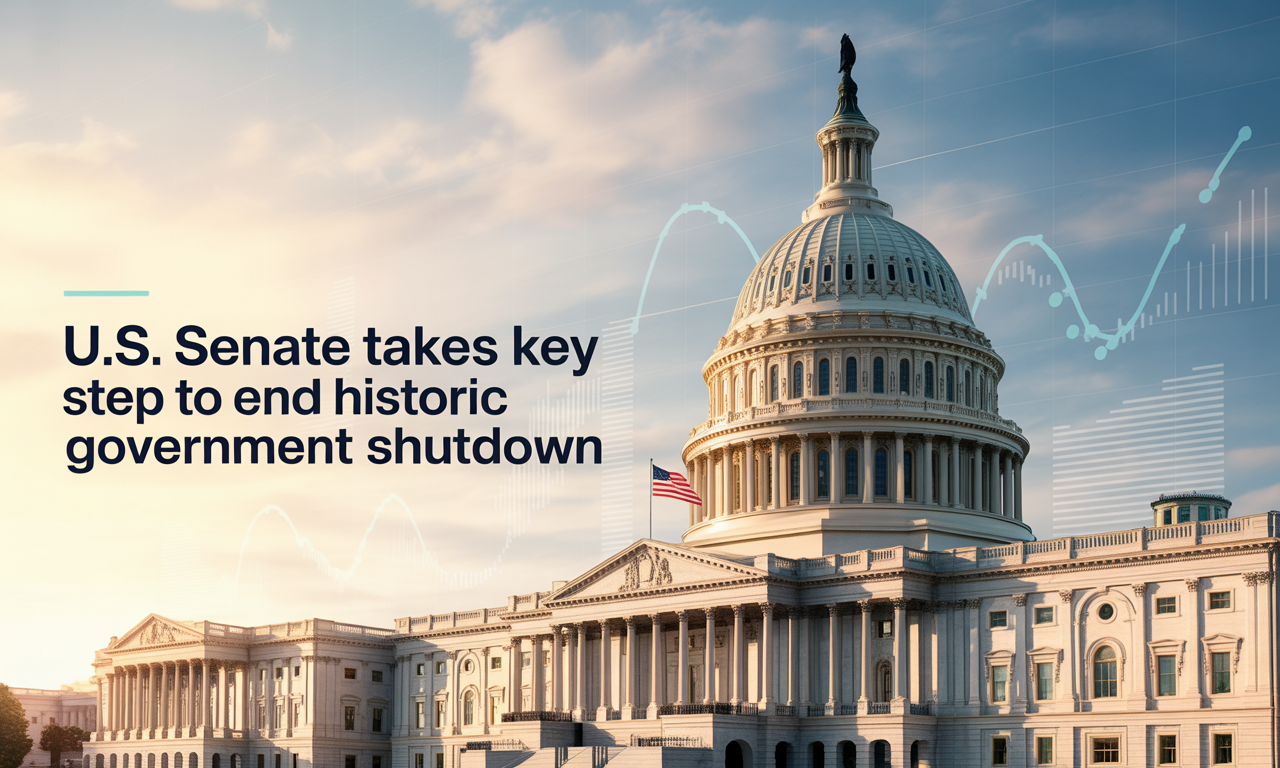U.S. Senate Takes Key Step to End Historic US Government Shutdown
Advanced | November 12, 2025
✨ Read the article aloud on your own or repeat each paragraph after your tutor.
US Government Shutdown: Senate Breakthrough After 40 Days
On November 10, 2025, the United States Senate voted 60‑40 to advance a funding bill that could end the longest US government shutdown in history. (Reuters) The shutdown began on October 1 when Congress missed statutory deadlines for continuing resolutions. The vote was a mix of almost all Republicans and eight Democrats who broke ranks with their party. (Reuters)
What’s in the Deal – And What’s Still Unclear
The compromise bill would reopen the government through January 30, 2026, halt planned workforce reductions, and provide back pay to furloughed federal workers (Reuters). However, it does not guarantee the extension of the health‑care tax credits that Democrats insisted on—those will be subject to a separate vote in December (Reuters). The House of Representatives will review the deal, and President Trump must sign it before full funding resumes (Reuters).
Why This US Government Shutdown Matters for Business & Global Markets
The US government shutdown knocked federal services, from airport air‑traffic control to food‑aid programs, out of sync and raised concerns about economic ripple‑effects. (The Guardian) Markets responded favourably to the breakthrough; the S&P 500 rose on hopes of stability. As gridlock dragged on, it increased risks for the broader economy and business confidence.
Key Lessons for Professionals & Learners
For business professionals and English learners alike, this is a case study in how political stalemates can affect financial markets, supply chains and organisational strategy. It also illustrates how language choices—“shutdown”, “funding gap”, “continuing resolution”, “back pay”—matter in corporate and policy communications. Recognising these terms helps you follow global news with confidence.
Vocabulary
- Shutdown (noun) – the suspension of government operations because of funding failure.
Example: “The 40‑day shutdown disrupted many federal services.” - Compromise (noun) – a settlement of differences by mutual concession.
Example: “Senators sought a compromise to end the funding stand‑off.” - Furlough (noun) – a temporary leave or lay‑off of workers without pay.
Example: “Thousands of federal employees were on furlough during the shutdown.” - Appropriations (noun) – funds set aside by a legislature for a specific purpose.
Example: “The bill includes three full‑year appropriations packages.” - Back pay (noun) – payment that is owed for past work.
Example: “Federal workers will receive back pay once the deal passes.” - Stalemate (noun) – a situation in which no progress can be made.
Example: “The funding stalemate lasted more than five weeks.” - Filibuster (noun) – extended debate in the Senate to block a vote.
Example: “The bill needed 60 votes to overcome the filibuster.” - Funding gap (noun) – the period when required funds are not approved.
Example: “The funding gap triggered the shutdown.” - Workforce reduction (noun) – the process of decreasing the number of employees, often for budget reasons.
Example: “The deal halts planned workforce reductions until January 30.” - Subsidy (noun) – a government payment supporting a particular industry or activity.
Example: “Democrats wanted an extension of health‑care subsidies.”
Discussion Questions (About the Article)
- What triggered the US government shutdown, and why did it last so long?
- What are the main elements of the Senate’s compromise bill?
- Why did some Democrats vote for the deal despite objections about healthcare subsidies?
- How did the shutdown affect business and public services?
- What could happen if the healthcare tax‑credit issue remains unresolved after December?
Discussion Questions (About the Topic)
- How should governments balance timely funding with political negotiation?
- What are the risks of a US government shutdown in a globalised business environment?
- How do political stalemates influence investor confidence and markets?
- What strategies can companies use to mitigate risks during funding disruptions?
- Should back pay for furloughed workers be automatic in such shutdowns? Why or why not?
Related Idiom
“Between a rock and a hard place” – This idiom describes being faced with two difficult options.
Example: “Senators were between a rock and a hard place, needing to fund the government but facing party demands on subsidies.”
📢 Want more tips like this? 👉 Sign up for the All About English Mastery Newsletter! Click here to join us!
Want to finally Master English but don’t have the time? Mastering English for Busy Professionals is the course for you!
Follow our YouTube Channel @All_About_English for more insights and weekly lessons.
This article was inspired by: Reuters, The Guardian, Al Jazeera


